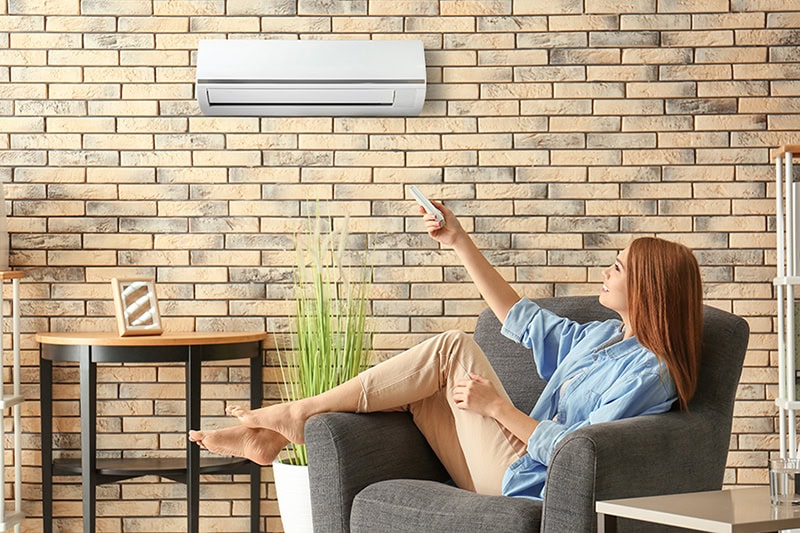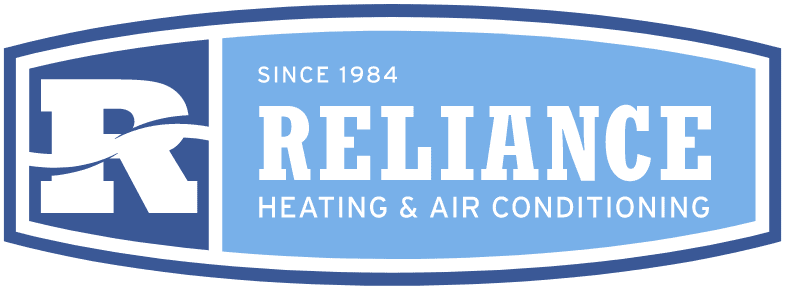Hot and Cold Spots? Get Even Heating and Cooling in Your Home

Do you experience four seasons just by walking through your home?
Does one room feel like a hot summer day and another like a cold winter night all at the same time?
Inconsistent heating and cooling are common problems that can affect your comfort and increase your energy bills in Phoenix.
At Reliance Heating & Cooling, we’ve got you covered with solutions that improve comfort, HVAC performance, and energy efficiency. Uneven heating and cooling are symptoms of many issues, all of which we can fix.
If adjusting and re-adjusting your thermostat hasn’t resolved hot and cold spots in your home, read on to learn how to address heating and cooling distribution issues effectively.
The 5 Main Causes of Uneven Home Temperatures
Temperatures are uneven in your home because of problems with producing, delivering, or retaining heating and cooling indoors. If your HVAC system can’t keep up with comfort demands throughout your home, this may be why:
Solar Gain: Rooms on the south side of your home tend to get significantly hotter than other areas because they receive direct sunlight for hours during the summer. Meanwhile, north-facing rooms may seem perpetually cold, especially in winter. Your central air conditioner, furnace, or heat pump can’t do much about specific rooms and their orientation to the sun.
Poor Insulation: Conditioned air can easily escape from your home through poorly insulated rooms. A room built over an uninsulated garage will struggle to retain heat compared to the rest of your home. During the summer, upstairs rooms with little insulation will overheat. Drafty windows and doors also create hot and cold spots that a central HVAC system cannot resolve.
Blocked Vents: Drapes covering a floor vent or a sofa pushed against a wall register can instantly reduce the flow of conditioned air, creating a cold or hot spot.
Clogged Filters: A dirty air filter reduces the volume of air pushed through the entire duct system, which can affect heating and cooling throughout your home in Phoenix.
Duct Leaks: Bent, cracked, kinked, and disconnected sections in your ductwork contribute to air loss. In unconditioned or partially conditioned areas, damaged ducts can lose up to 35 percent of your furnace’s heat output, according to the U.S. Department of Energy (DOE).
Simple DIY Steps to Solve Hot and Cold Spots
You might be able to fix the problem without professional help, depending on the cause.
Start by checking every air vent. Move furniture, rugs, and window coverings out of the way and ensure that every register is fully open and unobstructed.
Inspect your HVAC system’s air filter. If it is dirty or worse, clogged, replace it. A clean filter enables your system to function more efficiently and move more air. Check your one-inch filter monthly and replace it every 30 to 90 days. For thicker filters, refer to the manufacturer’s instructions for replacement frequency.
Closing blinds, drapes, or curtains on south-facing windows from 10 a.m. to 4 p.m. can reduce solar gain. Consider installing thermal curtains for even more control of heat loss and gain.
Caulk and weatherstrip to seal obvious gaps and cracks around windows and exterior doors, preventing drafts.
Professional HVAC Solutions for Lasting Comfort
If the simple, do-it-yourself steps don’t work, it’s time to call in our Reliance Heating & Cooling experts for an inspection.
Our technician can test the amount of air coming from each vent and adjust dampers to redirect air volume. We can also locate and seal leaks, tears, and disconnects throughout your duct system. Sealing cracks and repairing damaged ducts improves airflow throughout your home and boosts HVAC system efficiency.
If poor insulation is the problem, especially in the attic, a professional can install new insulation to create a superior thermal barrier.
Ductless Mini Splits: A Targeted Solution for Hot and Cold Spots
A ductless mini split is a lasting solution to uneven heating and cooling.
It is a versatile HVAC system that provides comfort to accessory buildings and garages, unducted homes, and individual rooms. A mini split can efficiently eliminate hot and cold spots without requiring you to adjust the temperature for your entire home.
The mini split’s outdoor unit is a heat pump that resembles a box fan. It is more compact than a typical ducted heat pump or AC unit. A power cord, condensate drain, and refrigerant line connect it to one or more indoor air handlers that mount directly on the wall or ceiling.
A mini split heat pump does not create heat; it transfers it via the refrigerant that flows in a loop from the outdoor unit to and from the indoor air handlers. It extracts heat from the outdoor air and sends it indoors in the winter to heat your home.
During the summer, it removes heat from indoors and exhausts it outdoors, cooling your home. Transferring heat, rather than creating it by burning fuel, is an exceptionally energy-efficient way to heat and cool.
A mini split is a game-changer in converted attics, sunrooms, or new additions. It provides room-by-room heating and cooling, and gives each indoor air handler its own independent temperature control.
When your central, ducted HVAC system struggles to heat or cool all rooms in your home evenly, you can provide additional comfort in “problem” rooms by installing a ductless mini split.
Schedule a Consultation Today for a Comfortable Home
Why battle with your ducted system for comfort when a ductless mini split or ductwork repairs can correct cold and hot spots in your Phoenix home? You can count on us at Reliance Heating & Cooling to determine the cause of uneven temperatures and provide the best solution for lasting comfort. Call us at 602-944-9585 or request service online.
